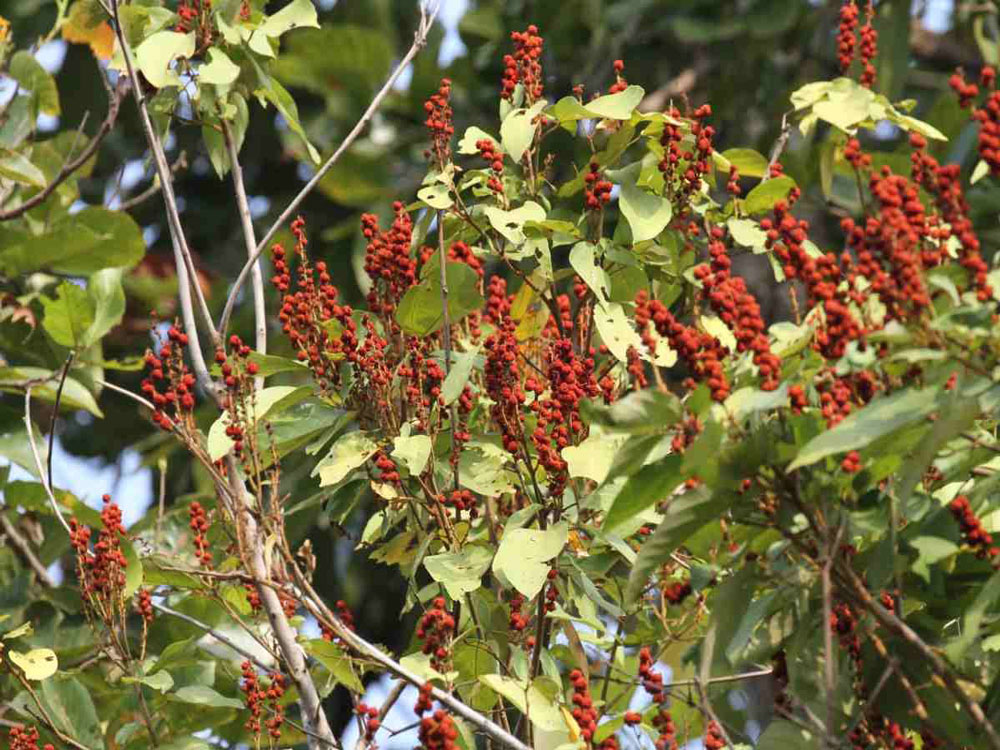Kamala - Scarlet Croton Tree

Mallotus philippensis
Summary
Scientific Classification
Kingdom: Plantae
Division: Angiospermae
Class: Dicotyledonae
Order: Malpighiales
Family: Euphorbiaceae
Genus: Mallotus
Species: M.philippensis
Scientific Name: Mallotus philippensis (Lam.) Muell.Arg.
Common Names:
English: Kaamala Tree, kamala Tree, dyer’s rottlera, Monkey face tree,Orange kamala, red kamala, scarlet croton.
Hindi: Kamala, raini, rohan, rohini, sinduri.
Kannada: Kunkuma-damara.
Marathi: Kesari, shendri.
Description:
- Habit and Habitat: an evergreen, dedicious trees. Terrestrial habitat, an irregular trunk and grey bark with many rusty-pubescent branches.
- Distribution: Occurs in South Asia, Southeast Asia, as well as Afghanistan and Australia. The southern most limit of natural distribution is Mount Keira, south of Sydney.
- Morphology:
Leaf: Ovate, ovate-elliptic, ovate-lanceolate or elliptic-lanceolate, acute or acuminate at apex, rarely notched, rounded or truncate at base, entire or serrate along the margins, glabrescent above, pubescent with minute red glands beneath, pale green, subcoriaceous, petiolate, petioles terete, rusty pubescent, curved at the top.
Infloroscence: Racemes.
Flower: Small, greenish-yellow, male sessile or pedicelled, in erect, axillary or terminal simple spikes rarely solitary.
Androceium: Each flower with numerous stamens, small.
Gynoceium: Stellate hairy, 3 celled ovary with 3 papillose stigmas.
Fruit: Capsules subglobose, 3-lobed, glandular-hairy, deep-red.
Flowering and Fruiting Time: October-November.
Seeds: black, smooth, subglobose. - Propagation: By seeds.
- Importance:
The red powder Kamala (kanku) is used as an vermifuge for round and ring worms. Soluble in alchohol, produces a red dye suited to colouring of silk and wool. - Location: Throughout college.
 Trees of GSS Project supported by Makerspace Belgaum Website concept and designe by
Trees of GSS Project supported by Makerspace Belgaum Website concept and designe by